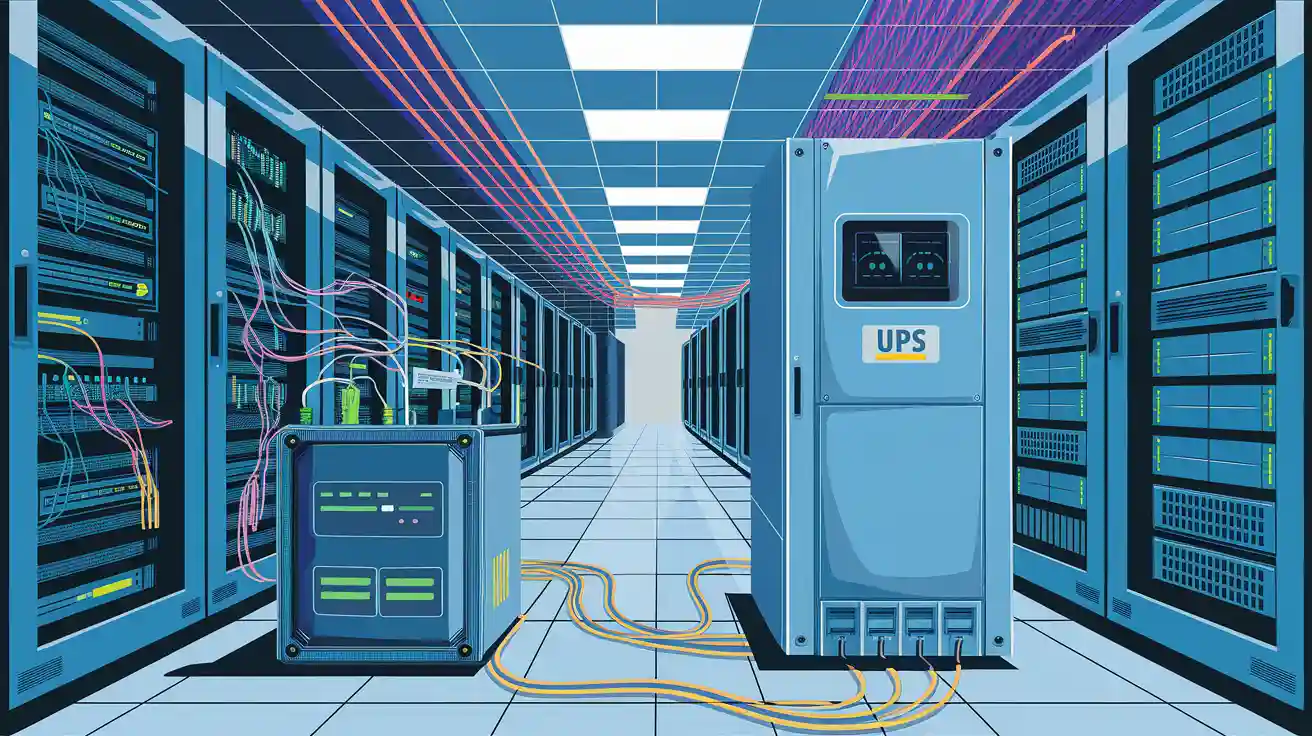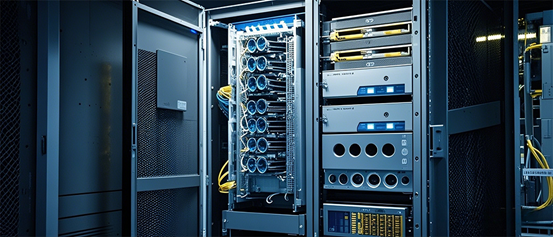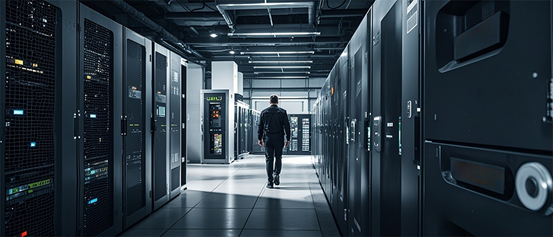Contents

Data centers rely on uninterrupted power to maintain critical operations. A robust backup power system ensures that even during outages, your infrastructure remains functional. Choosing between different systems can be challenging, especially when considering options like BBUs and UPS. Each system offers unique benefits and plays a vital role in maintaining uptime. This blog explores the differences between these two solutions, helping you understand how Data Center backup Power BBUs vs UPS can impact your operations.
Key Takeaways
- BBUs provide localized, short-term backup power directly at the rack level. the Open compute project version was engineered to deliver approximately four minutes of backup power.
- UPS systems provide central backup power for 10-15 minutes during outages.
- A mix of BBUs and UPS can save energy and resources.
- Think about your data center’s power needs, growth, and budget before deciding.
- Both BBUs and UPS help keep systems running and protect equipment.
Part 1: Data Center Backup Power BBUs vs UPS: Definitions and Roles
1.1 What Are BBUs?
Battery Backup Units (BBUs) are localized power storage systems designed to provide short-term energy during power disruptions. Unlike centralized systems, BBUs are often integrated directly into server racks or cabinets, offering a more granular approach to power redundancy. They typically deliver backup power for around four minutes, which is sufficient to bridge gaps caused by localized failures or to complement larger systems like UPS.
BBUs excel in addressing specific scenarios where traditional systems might fall short. For instance, they can mitigate issues arising from low-voltage distribution or faults in power shelves. This precision makes them an essential component in modern data centers, especially as power demands increase with advancements in AI chips and high-performance computing.
1.2 What Is a UPS?
Uninterruptible Power Supply (UPS) systems are centralized solutions that ensure continuous power during outages. They act as a buffer, providing power for 10-15 minutes while backup generators activate. UPS systems are critical for maintaining operational continuity, as they can respond in less than 10 milliseconds to power disruptions.
Modern UPS systems achieve up to 99% efficiency in standby mode, minimizing energy losses. Configurations like 2N and N+2C enhance reliability, ensuring that even during failures, critical systems remain operational. The growing demand for cloud computing and data center expansion has driven the UPS market to a projected value of USD 9.58 billion within five years, highlighting their indispensable role.
1.3 Why Are Backup Power Systems Essential for Data Centers?
Backup power systems are the backbone of data center reliability. They prevent unplanned downtime, ensuring that servers, networking equipment, and critical applications remain operational during outages. In 2022, electricity customers experienced an average of five and a half hours of power interruptions, underscoring the need for robust backup solutions.
These systems not only protect sensitive equipment but also support business continuity. By bridging the gap between power loss and generator activation, they safeguard essential data and applications. Whether through BBUs or UPS, backup power systems are vital for maintaining uptime and meeting the demands of modern digital infrastructure.
Part 2: Comparing BBUs and UPS: Key Differences

2.1 Technology and Design
BBUs and UPS differ significantly in their technology and design. BBUs are decentralized systems, often integrated directly into server racks or cabinets. This design allows them to address localized power issues, such as faults in power shelves or low-voltage distribution, which centralized systems like UPS may overlook. BBUs also offer flexibility in deployment, with configurations like sidecar models or rack-mounted units that can adapt to specific data center needs.
UPS systems, on the other hand, are centralized solutions designed to provide a buffer during power outages. They rely on a network of batteries housed in a single location, delivering power to the entire data center. Best practices for UPS design emphasize reliability, scalability, and ease of maintenance. Distributed battery setups within UPS systems enhance serviceability and fault containment, making them a robust choice for large-scale operations.
2.2 Performance and Reliability
When it comes to performance, both systems excel in their respective roles. BBUs provide rapid response times, delivering power for approximately four minutes. This duration is sufficient to handle localized failures or complement UPS systems. Their proximity to the equipment ensures minimal power loss and quick recovery.
UPS systems, however, shine in scenarios requiring extended backup. They can sustain operations for 10-15 minutes, bridging the gap until diesel generators activate. Modern UPS systems achieve up to 99% efficiency in standby mode, reducing energy waste. Their centralized design ensures consistent performance across the entire data center, making them indispensable for critical operations.
2.3 Cost and Scalability
Cost and scalability are crucial factors when choosing between BBUs and UPS. BBUs typically involve lower initial investments due to their modular design. They are easier to scale, as you can add units directly to specific racks or cabinets. This approach minimizes installation complexity and cooling requirements.
UPS systems, while reliable, often come with higher upfront costs. Centralized configurations require significant planning and coordination. A cost analysis reveals that centralized UPS may waste up to 25% of energy due to overestimation, whereas distributed setups are more efficient. The table below highlights key differences:
| Aspect | Centralized UPS | BBUs |
|---|---|---|
| Energy Efficiency | Can waste up to 25% of energy due to overestimation | Generally more efficient due to lower capacity needs |
| Installation Complexity | Requires significant coordination and planning | Easier to install and manage |
| Cost | Higher initial investment | Lower initial investment |
| Cooling Requirements | May require dedicated HVAC systems | Typically less cooling demand |
| Scalability | Limited scalability without significant investment | Easily scalable by adding more units |
Understanding these differences will help you make informed decisions about the best solution for your data center.
2.4 Environmental Impact
When evaluating backup power systems for data centers, you must consider their environmental impact. Both BBUs and UPS systems contribute to energy efficiency and sustainability, but their designs and operations influence their ecological footprint differently.
BBUs, with their decentralized architecture, often consume less energy during operation. Their modular design allows you to scale power capacity without overestimating requirements, reducing unnecessary energy consumption. Additionally, advancements in battery technology have made BBUs more environmentally friendly. These innovations extend battery life and minimize waste, aligning with green data center initiatives. However, the production and disposal of batteries still pose challenges, requiring proper recycling protocols to mitigate environmental harm.
UPS systems, on the other hand, are centralized and typically require more energy to maintain. While modern UPS units achieve up to 99% efficiency in standby mode, their larger scale and cooling demands can increase overall energy usage. The centralized nature of UPS systems often leads to overprovisioning, which wastes energy and resources. However, many UPS manufacturers now prioritize eco-friendly designs, incorporating energy-efficient components and renewable energy integration. These efforts aim to reduce the carbon footprint of large-scale data centers.
Tip: To minimize environmental impact, consider hybrid solutions that combine BBUs and UPS systems. This approach leverages the energy efficiency of BBUs for localized needs while relying on UPS systems for broader coverage, optimizing resource utilization.
By understanding the environmental implications of each system, you can make informed decisions that align with your sustainability goals. Whether you prioritize energy efficiency, waste reduction, or renewable integration, selecting the right backup power system plays a crucial role in building a greener data center.
Part 3: Pros and Cons of BBUs and UPS

3.1 Advantages of BBUs
BBUs offer several advantages that make them a compelling choice for modern data centers. Their decentralized design allows you to address localized power issues effectively. By integrating directly into server racks or cabinets, BBUs minimize power loss and ensure rapid recovery during disruptions. This proximity to equipment enhances reliability, especially in scenarios where low-voltage distribution or power shelf faults occur.
Distributed battery systems further improve reliability by managing battery modules across separate cabinets. This approach reduces DC power protection costs and enhances overall efficiency. As AI chips and high-performance computing demand higher power capacities, BBUs adapt seamlessly to these evolving needs. Their modular design also simplifies scalability, enabling you to expand capacity without significant infrastructure changes.
Tip: BBUs are ideal for data centers prioritizing precision and flexibility in backup power systems. They complement centralized solutions like UPS, bridging gaps in coverage and enhancing operational resilience.
3.2 Disadvantages of BBUs
Despite their benefits, BBUs have limitations that you should consider. Their shorter backup duration, typically around four minutes, may not suffice for extended outages. While they excel in localized scenarios, BBUs cannot replace centralized systems for broader coverage. Their reliance on battery technology also poses challenges related to production, disposal, and recycling.
BBUs require careful planning to ensure compatibility with existing infrastructure. Their modular nature, while advantageous for scalability, can increase management complexity. You may need to monitor multiple units, which can burden IT staff.
Additionally, in high-density environments like data centers, the risk of overheating or thermal runaway in damaged or aging batteries necessitates additional safety measures.
3.3 Advantages of UPS
UPS systems provide unmatched reliability and performance in data centers. They ensure uninterrupted power to critical loads, safeguarding IT equipment and cooling systems during outages. Their centralized design delivers power for 10-15 minutes, bridging the gap until diesel generators activate. This extended runtime protects sensitive equipment and prevents data loss, ensuring operational continuity.
UPS systems also enhance equipment lifespan by shielding devices from electric faults and power surges. Distributed battery setups improve reliability by avoiding single points of failure, ensuring continuous power supply during faults. As electricity consumption rises in data centers, especially with AI and HPC demands, UPS systems become crucial for maintaining power quality.
Callout: UPS systems are indispensable for high-density environments where redundancy and reliability are paramount. Their ability to balance capital costs with availability makes them a cornerstone of modern data center infrastructure.
3.4 Disadvantages of UPS
UPS systems, while indispensable for data center operations, come with notable drawbacks that you should consider before implementation.
- Battery Limitations: The batteries in UPS systems often emerge as the weakest link. Their lifespan depends on factors like usage patterns, temperature, and maintenance. Frequent cycling and high loads can accelerate wear, leading to unexpected failures. Battery replacements add to operational costs and require careful planning to avoid downtime.
- Thermal Overload Risks: High-density racks in modern data centers generate significant heat. UPS systems must support cooling infrastructure to prevent thermal overload. Without adequate cooling, the risk of equipment failure increases. This dependency on cooling systems adds complexity to UPS deployment and raises energy consumption.
- Cost Implications: Increased redundancy in UPS design enhances reliability but inflates both capital and operational expenses. Configurations like 2N or N+2C require additional hardware and maintenance, impacting your budget. Overprovisioning in centralized setups can waste up to 25% of energy, further straining resources.
Note: UPS systems often require dedicated HVAC systems to manage heat, which increases installation complexity and operational costs.
- Scalability Challenges: Expanding UPS capacity involves significant investment and infrastructure changes. Unlike modular solutions like BBUs, centralized UPS systems lack the flexibility to scale incrementally. This limitation makes them less adaptable to evolving power demands in high-performance computing environments.
Understanding these disadvantages will help you evaluate whether UPS systems align with your data center’s needs and budget constraints. While they offer robust protection, their limitations highlight the importance of considering alternative or complementary solutions like BBUs for localized power redundancy.
Part 4: Choosing Between BBUs and UPS for Your Data Center
4.1 Factors to Consider
Selecting the right backup power system for your data center requires evaluating several critical factors. Each decision impacts reliability, scalability, and cost-efficiency. Here are key considerations:
- Power Provision Needs: Assess the runtime requirements for your data center. For instance, UPS systems typically provide 10-15 minutes of backup, sufficient for generator activation, while BBUs offer around four minutes, ideal for localized failures.
- Reliability and Redundancy: Choose a system that aligns with your uptime goals. N+1 redundancy designs balance cost and reliability, ensuring continuous operation even during component failures.
- Scalability: Consider future growth. BBUs offer modular scalability, allowing you to expand capacity incrementally. UPS systems, particularly centralized ones, may require significant infrastructure changes for upgrades.
- Environmental Impact: Evaluate energy efficiency and sustainability. Hybrid solutions combining BBUs and UPS can optimize resource utilization and reduce energy waste.
- Cost Implications: Analyze both initial investments and operational expenses. Centralized UPS systems often involve higher upfront costs and cooling demands, while distributed setups or BBUs can lower these expenses.
Tip: A hybrid approach can leverage the strengths of both systems, providing robust coverage while optimizing costs and energy efficiency.
Choosing between BBUs and UPS requires a clear understanding of their differences and unique benefits. BBUs excel in localized power redundancy with their modular design and rapid response, while UPS systems provide centralized, extended backup for broader coverage. Each system has its strengths and limitations, as summarized below:
| Feature | UPS | BBUs |
|---|---|---|
| Key Differences | Supports high-density server hardware | Better reliability and ease of installation |
| Advantages | Stable power output | precision and flexibility |
| Disadvantages | Higher costs and energy inefficiencies | Requires more management and monitoring |
Evaluating your data center’s specific needs—such as budget, scalability, and power requirements—will guide you toward the right solution. BBUs offer precision and flexibility, while UPS systems ensure reliability for critical operations.
Takeaway: Both BBUs and UPS systems play vital roles in data centers. The best choice depends on your operational priorities and long-term goals.
FAQs
What is the primary difference between BBUs and UPS systems?
BBUs provide localized, short-term backup power directly at the rack level, while UPS systems offer centralized power backup for the entire data center. BBUs typically last around four minutes, whereas UPS systems can sustain operations for 10-15 minutes until generators activate.
Can BBUs replace UPS systems in a data center?
BBUs can complement or partially replace UPS systems in specific scenarios. They address localized power issues and enhance precision. However, for broader coverage and extended backup durations, UPS systems remain essential, especially in large-scale operations.
How do BBUs and UPS systems handle environmental impact?
BBUs consume less energy due to their modular design and advancements in battery technology. UPS systems, while efficient, often require more energy for cooling and maintenance. Combining both systems can optimize energy use and reduce environmental impact.
Are BBUs suitable for high-performance computing environments?
Yes, BBUs adapt well to high-performance computing needs. Their modular design supports the increasing power demands of AI chips and dynamic workloads. They also help manage peak loads effectively, ensuring stable operations in high-density environments.
What factors should you consider when choosing between BBUs and UPS?
Evaluate runtime needs, scalability, cost, and environmental goals. BBUs offer flexibility and precision for localized issues, while UPS systems provide centralized, extended backup. A hybrid approach can combine their strengths for optimal performance and reliability.





